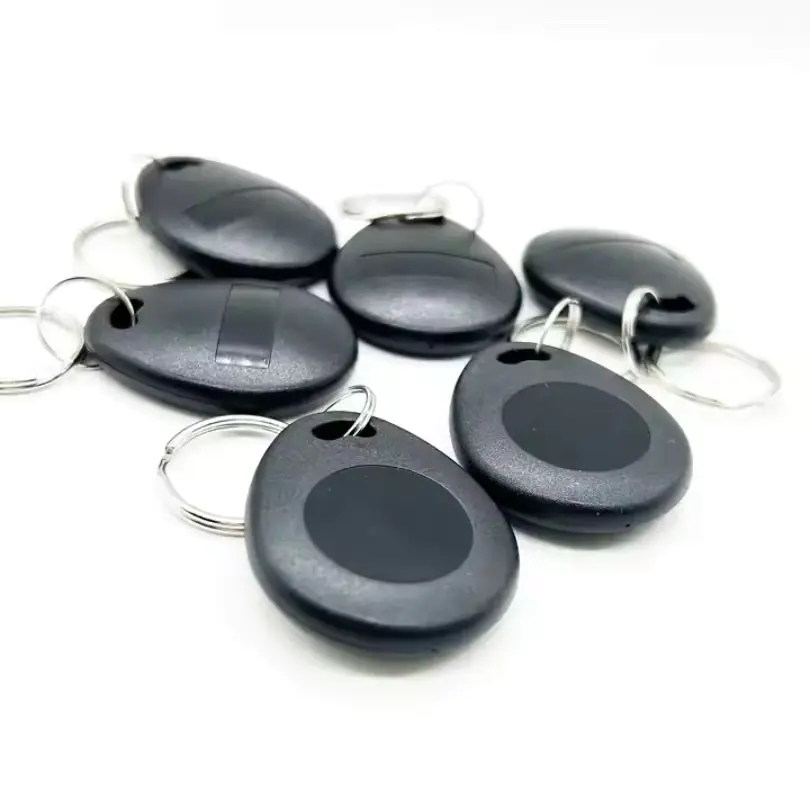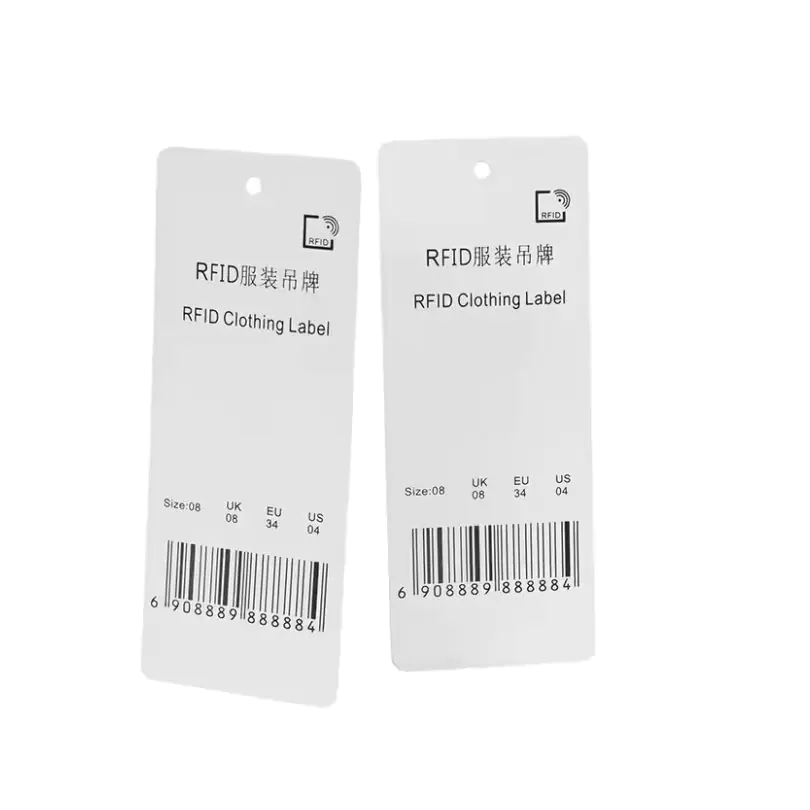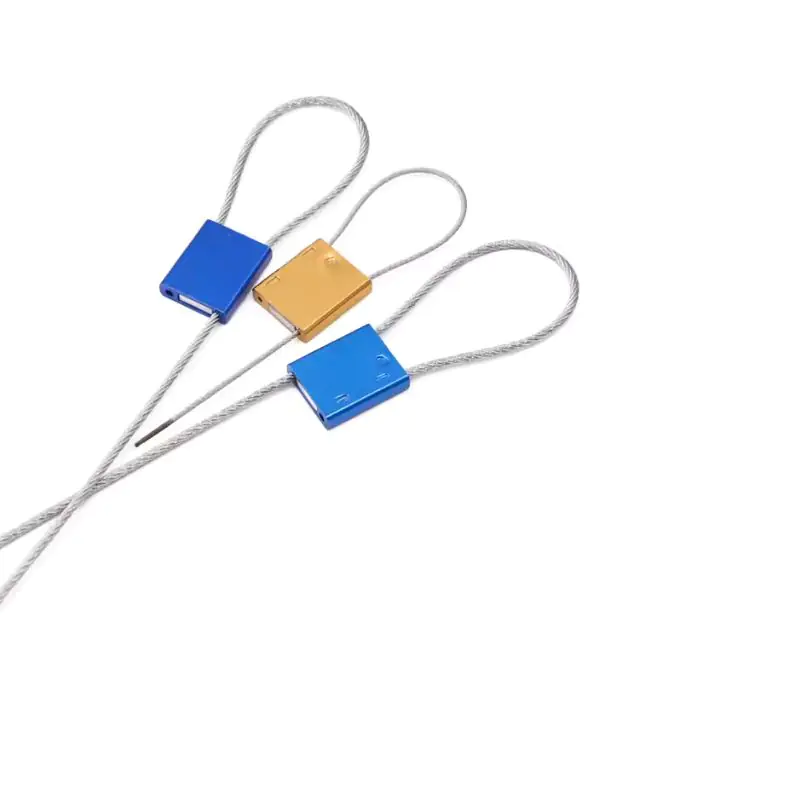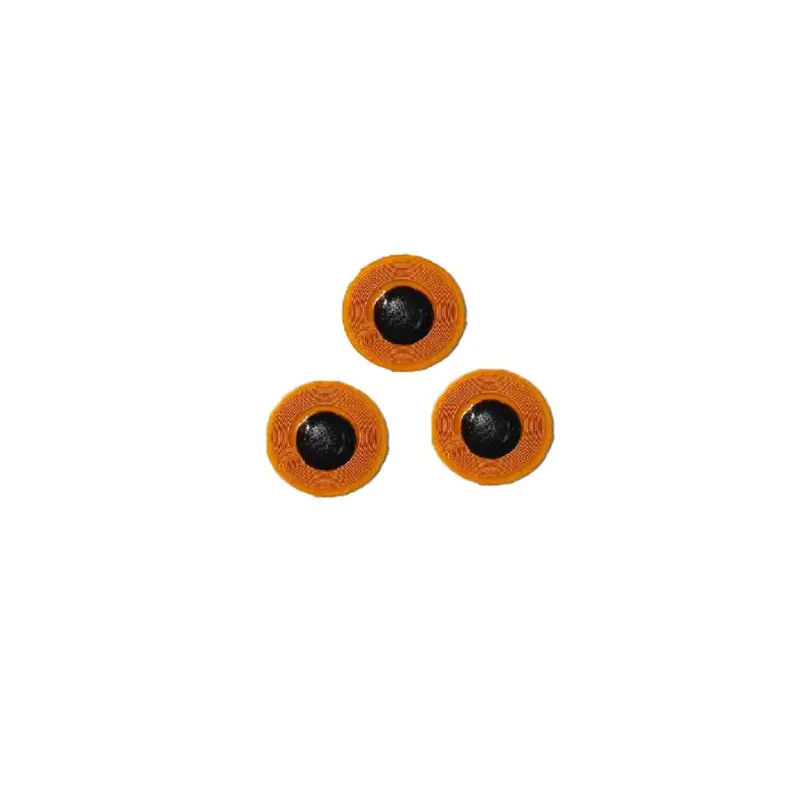
Forstå fordelene med RFID-tagger i lagerstyring
Innholdsfortegnelse
Hvordan RFID-teknologi revolusjonerer nøyaktigheten, effektiviteten og oversikten over varelageret
RFID-teknologi gjør det mulig for bedrifter å automatisere lagersporing, forbedre nøyaktigheten og få sanntidsoversikt over hele forsyningskjeden - fra lagerhyllene til butikkgulvet.
I denne artikkelen skal vi se nærmere på hvordan RFID-brikker i varelageret ledelsesarbeid og de viktigste fordelene med dette.
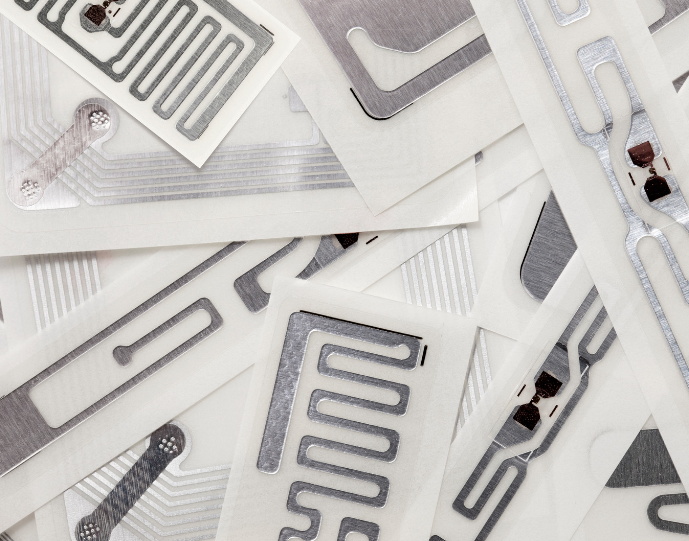
Hva er RFID-tagger?
RFID-brikker er små, trådløse enheter som lagrer data om gjenstandene de er festet til. De inneholder en mikrobrikke og en antenne som kommuniserer med RFID-lesere via radiobølger - det kreves ingen siktlinje.
Det finnes tre hovedtyper:
- Passive RFID-brikker - uten batteri; drives av lesersignaler (ideelt for lagerbeholdning)
- Aktive RFID-brikker - batteridrevet, lengre rekkevidde og sporing i sanntid
- Semipassiv (BAP) - Batteristøttet; brukes til spesialovervåking (f.eks. temperatur)
I lagersystemer er passive UHF-brikker (Ultra-High Frequency) de mest brukte på grunn av deres lange avlesningsrekkevidde, mulighet for masseskanning og lave kostnad per brikke.
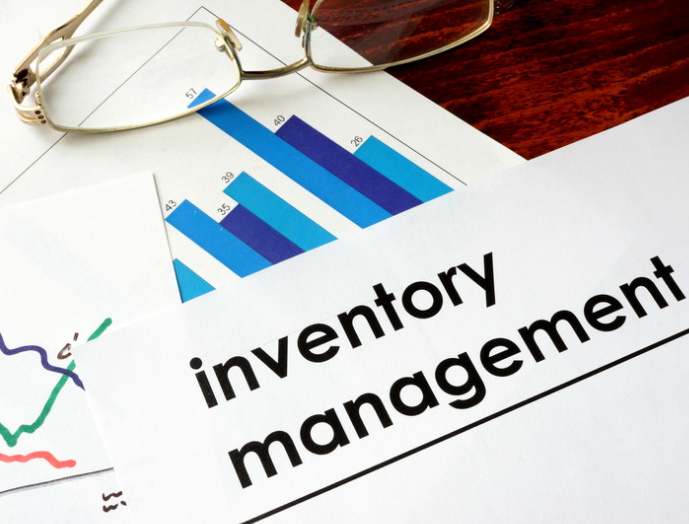
De viktigste fordelene ved å bruke RFID-brikker i lagerstyringen
RFID (radiofrekvensidentifikasjon) har blitt en "game-changer" for lagerstyring, og tilbyr automatisering, presisjon og hastighet som langt overgår tradisjonelle metoder som strekkoder eller manuelle logger. Nedenfor finner du de viktigste fordelene RFID gir for lagerstyring i alle bransjer:
1. Lagersynlighet i sanntid
RFID oppdaterer lagerdata automatisk i sanntid etter hvert som produktene beveger seg gjennom anlegget. I motsetning til strekkoder, som krever direkte siktlinje og manuell skanning, kan RFID-brikker i lagerbeholdningen leses trådløst på flere meters avstand, selv i store mengder.
Hvorfor dette er viktig:
- Finn varer på lager eller i butikklokaler på et øyeblikk
- Overvåk lagernivåene kontinuerlig uten manuelle tellinger
- Muliggjør just-in-time (JIT)-påfylling og reduserer arbeidskapitalen
Påvirkning: Reduserer blindsoner i forsyningskjeden og gir en direkte oversikt over lagerbeholdningen på tvers av flere lokasjoner.
2. Økt nøyaktighet i lagerbeholdningen
Manuelle inntastingsfeil og manglende skanning fører til feil lagernivåer, feilplasserte varer og kostbare etterbestillinger. RFID forbedrer lagernøyaktigheten til over 95-99%, noe som er betydelig høyere enn tradisjonelle strekkodebaserte systemer.
Fordelene inkluderer:
- Færre avskrivninger og avstemminger av varelageret
- Mer nøyaktig ordreoppfyllelse
- Reduserte scenarier med "utsolgt lager" og "fantomlager"
Høy nøyaktighet hjelper deg med å ta datadrevne beslutninger om innkjøp, påfylling og lagerplass.
3. Raskere inventering og syklustelling
RFID gjør det mye raskere å revidere varelageret. Personalet kan gå gjennom gangene med en håndholdt leser og skanne tusenvis av varer på få minutter uten å måtte åpne esker eller skanne hver enkelt etikett.
Sammenlignet med strekkode:
- 80% raskere lagerbeholdning
- Reduserte arbeidskostnader og manuelle feil
- Muliggjør hyppigere syklustellinger, noe som forbedrer lagerbeholdningen året rundt
Denne effektiviteten fører til en slankere drift og en mer fleksibel respons på endringer i etterspørselen.
4. Forbedret lagereffektivitet
RFID gir bedre kontroll over inngående, utgående og interne lagerbevegelser:
- Innkommende: Brikkene skannes ved ankomst for automatisk innsjekking
- Lagring: Varene plasseres i RFID-merkede soner, slik at de raskt kan lokaliseres
- Utgående: Plukkede og pakkede bestillinger verifiseres via RFID, noe som reduserer feilsendinger
RFID bidrar til å automatisere disse prosessene med færre berøringer og mindre rom for feil, noe som reduserer gjennomløpstiden og effektiviserer driften.
5. Forebygging av tap og sikring av eiendeler
RFID-brikker i varelageret bidrar til å overvåke varer av høy verdi eller varer som ofte blir feilplassert, og gjør det enklere å ta ansvar. Portlesere eller kontrollsystemer kan utløse varsler ved uautoriserte bevegelser.
Du kan også spore:
- Bruk av verktøy i fabrikker
- Utløpsdatoer i medisinsk/pharma-lagring
- Vedlikeholdsstatus for returnerbare eiendeler (f.eks. kasser, verktøy, utstyr)
RFID gir et ekstra lag med sanntidssynlighet og sporbarhet, noe som minimerer svinn og tap.
6. Skalerbarhet og administrasjon av flere nettsteder
RFID-systemer kan enkelt skaleres på tvers av anlegg, lagre, butikker og geografiske områder. Med skybaserte lagerplattformer kan du spore eiendeler på tvers av lokasjoner i sanntid fra et sentralisert dashbord.
Ideell for:
- Butikkjeder med flere butikkfronter
- 3PL-leverandører som håndterer distribuert lagerbeholdning
- Globale forsyningskjeder med behov for sporing på tvers av landegrensene
Sentralisert oversikt fører til tettere koordinering og bedre prognoser.
7. Integrering med ERP- og WMS-systemer
Moderne RFID-plattformer kan integreres direkte med ERP- (Enterprise Resource Planning), WMS- (Warehouse Management Systems) og POS-plattformer (Point of Sale).
Hva dette muliggjør:
- Automatisk oppdatering av lagernivåer i ERP-systemet
- Utløser automatisk nye bestillinger når lagerbeholdningen synker
- Rapportering i sanntid og prediktive analyser
Denne integrasjonen skaper en sømløs dataflyt som fremmer automatisering, innsikt og operativ intelligens.
8. Kostnadsbesparelser over tid
Selv om RFID krever en startinvestering i tagger, lesere og programvare, betaler det seg raskt gjennom følgende
- Lavere lønnskostnader
- Færre feil i forsendelsen
- Reduserte lagerholdskostnader
- Økt kundetilfredshet på grunn av bedre oppfyllelse
For mange virksomheter gir RFID en positiv avkastning på 12-24 måneder, spesielt i bransjer med store SKU-volumer eller kompleks logistikk.
Bransjer som utnytter RFID-brikker for lagerkontroll
RFID-systemer kan enkelt skaleres på tvers av anlegg, lagre, butikker og geografiske områder. Med skybaserte lagerplattformer kan du spore eiendeler på tvers av lokasjoner i sanntid fra et sentralisert dashbord.
Ideell for:
- Butikkjeder med flere butikkfronter
- 3PL-leverandører som håndterer distribuert lagerbeholdning
- Globale forsyningskjeder med behov for sporing på tvers av landegrensene
Sentralisert oversikt fører til tettere koordinering og bedre prognoser.
Detaljhandel og mote
Brukstilfeller:
- Merking av klær, tilbehør og elektronikk på varenivå
- Automatiske påfyllingsvarsler
- Oversikt over lagerbeholdningen i alle kanaler
- Tyveriforebygging via RFID-aktiverte EAS-systemer
Fordeler:
- Oppnår opptil 99% lagernøyaktighet
- Reduserer scenarier med utsolgt lager
- Øker kundetilfredsheten med tilgjengelighet i sanntid
- Muliggjør raske lagerrevisjoner og hyllepåfylling
Eksempel: Store motemerker bruker UHF RFID-brikker til å spore varene fra lageret til kassen, noe som forbedrer fullprissalget og minimerer prisavslag.
Logistikk og 3PL (tredjepartslogistikk)
Brukstilfeller:
- Sporing av paller, kartonger og returemballasje
- Verifisering av forsendelser under inngående/utgående prosesser
- Oversikt over lagerbeholdningen i sanntid på tvers av lagrene
- RFID-portaler ved kaidører for automatisk skanning
Fordeler:
- Reduserer fraktfeil og manuell skanning
- Forbedrer nøyaktigheten i plukk/pakking og gjennomløpstiden
- Optimaliserer plassutnyttelse og arbeidskraft
- Forbedrer sporbarheten i hele forsyningskjeden
Eksempel: Logistikkfirmaer kan bruke RFID-merkede paller og portlesere for å kontrollere at lastingen er nøyaktig, uten å skanne hver enkelt vare manuelt.
Produksjon og industriproduksjon
Brukstilfeller:
- Sporing av pågående arbeid (WIP)
- Komponent- og verktøyhåndtering
- Lagerbeholdning av råvarer og reservedeler
- Vedlikeholdsplaner og samsvarsmerking
Fordeler:
- Sporer varer gjennom hvert trinn i produksjonen
- Automatiserer påfylling av materialer på monteringslinjer
- Reduserer nedetid på grunn av manglende eller feilplasserte verktøy
- Støtter lean produksjon og Six Sigma-initiativer
Eksempel: Bilprodusenter bruker robuste RFID-brikker til å overvåke deler fra montering til forsendelse, noe som forbedrer sporbarheten og reduserer sløsing.
Helse- og legemiddelindustrien
Brukstilfeller:
- Lagerkontroll for medisinsk utstyr og legemidler
- Utløpsdato og sporing av partier
- Sporing av kirurgiske instrumenter og overvåking av sterilisering
- Pasientspesifikk lagerstyring
Fordeler:
- Øker nøyaktigheten og sikkerheten i lagerhåndteringen
- Forhindrer overlagring og utsolgt av kritiske varer
- Sikrer overholdelse av regelverk (FDA, HIPAA)
- Sporer bruken av verdifulle og temperaturfølsomme varer
Eksempel: Sykehusene bruker RFID-skap for automatisk å spore utlevering og retur av kirurgiske verktøy og medisiner.
Luft- og romfart
Brukstilfeller:
- Sporing av flydeler og verktøy
- Lagerbeholdning av forbruksvarer og servicekomponenter
- Overvåking av vedlikeholdsplaner
- Håndtering av returkasser og -containere
Fordeler:
- Støtter strenge vedlikeholds- og sikkerhetskrav
- Reduserer risikoen for feiltilpasning eller feilplassering av deler
- Øker synligheten av lagerbeholdningen på flyplasser, i hangarer og på lagre
- Raskere revisjoner for overholdelse av regelverk
Eksempel: Flyselskapene merker flykomponenter med RFID for å effektivisere inspeksjonene, forbedre gjennomføringstiden og oppfylle luftfartsmyndighetenes standarder.
Gjestfrihet og arrangementer
Brukstilfeller:
- Sporing av sengetøy og uniformer
- Lagerstyring av minibarer
- RFID-aktiverte armbånd for festivaler eller feriesteder
- Inventar for gjestefasiliteter og matservering
Fordeler:
- Forhindrer tap eller tyveri av gjenbrukbare gjenstander
- Raskere romservice og påfylling av forsyninger
- Støtter kontantfri betaling og adgangskontroll ved arrangementer
- Leverer personlige gjesteopplevelser ved hjelp av bruksdata
Eksempel: En hotellkjede bruker RFID til å administrere håndkle- og sengetøysirkulasjonen, noe som reduserer utskiftingskostnadene og gjør renholdet mer effektivt.
Utdanning og bibliotek
Brukstilfeller:
- Sporing av bøker, medier og læremidler
- Sporing av laboratorieinventar og vitenskapelig utstyr
- RFID-kortstyrte skap og lagerrom
- Ressursforvaltning for nettbrett, bærbare datamaskiner og AV-utstyr
Fordeler:
- Forhindrer tap eller tyveri av verdifulle gjenstander
- Forbedrer innsjekkings- og utsjekkingshastigheten
- Muliggjør nøyaktige lagerrapporter for skoleadministratorer
- Reduserer tiden som brukes på materialhåndtering
Eksempel: Bibliotekene bruker RFID-merkede bøker og kiosker for å muliggjøre selvutsjekking og rask retur, samtidig som de reduserer arbeidsmengden for de ansatte.
Bruk av RFID-tagger i lagerbeholdningen i den virkelige verden
Walmart - Retail Management i sanntid
Walmart bruker RFID-brikker til å spore produkter i butikker og på lager. Dette sikrer lagertilgjengelighet, forhindrer overlagring og forbedrer hyllenøyaktigheten.
Boeing - Sporing av romfartskomponenter
Boeing integrerer RFID i forsyningskjeden for å spore deler på tvers av produksjonslinjene, noe som forbedrer effektiviteten, reduserer nedetid og forhindrer tap av komponenter.
Kaiser Permanente - Lagerstyring i helsevesenet
Kaiser bruker RFID til å overvåke medisinsk utstyr og legemidler i sanntid, noe som sikrer tilgjengelighet, reduserer sløsing og øker pasientsikkerheten.
Velge riktig RFID-tag i lagerbeholdningen
Når du skal velge en RFID-brikke, bør du vurdere følgende
- Nødvendig frekvens og rekkevidde
- Miljøforhold (metall, væsker, temperatur)
- Budsjett og distribusjonsvolum
- Monteringsmetode (selvklebende, innstøpt, anti-metall)
- Sikkerhetsnivå og integrasjon med eksisterende systemer
Trenger du hjelp til å velge riktig tag? Kontakt oss for ekspertråd
Vanlige utfordringer og hvordan du kan overvinne dem
Signalforstyrrelser
Metall, væsker og tette lagerområder kan forstyrre RFID-signalene.
Løsning: Bruk antimetallbrikker og riktig antenneplassering.
Innledende investeringskostnad
Maskinvare og oppsett kan være dyrere enn strekkoding.
Løsning: Start med et pilotprogram for å måle avkastningen før du skalerer opp.
Datasikkerhet
RFID-brikker kan være sårbare for uautorisert skanning.
Løsning: Bruk krypterte tagger og sikre programvareplattformer.
Med riktig planlegging er RFID-implementering både trygt og kostnadseffektivt.
Konklusjon: Er RFID riktig for dine lagerbehov?
Hvis virksomheten din håndterer store eller raskt omsettelige varelagre og du ønsker det:
- Mer nøyaktig sporing
- Raskere revisjoner
- Redusert krymping
- Smartere lagerbeholdning
- Synlighet i sanntid i hele forsyningskjeden
Da er RFID ikke bare en god idé - det er et konkurransefortrinn.
RFID gjør lagerbeholdningen smartere, slankere og enklere å administrere i sanntid.
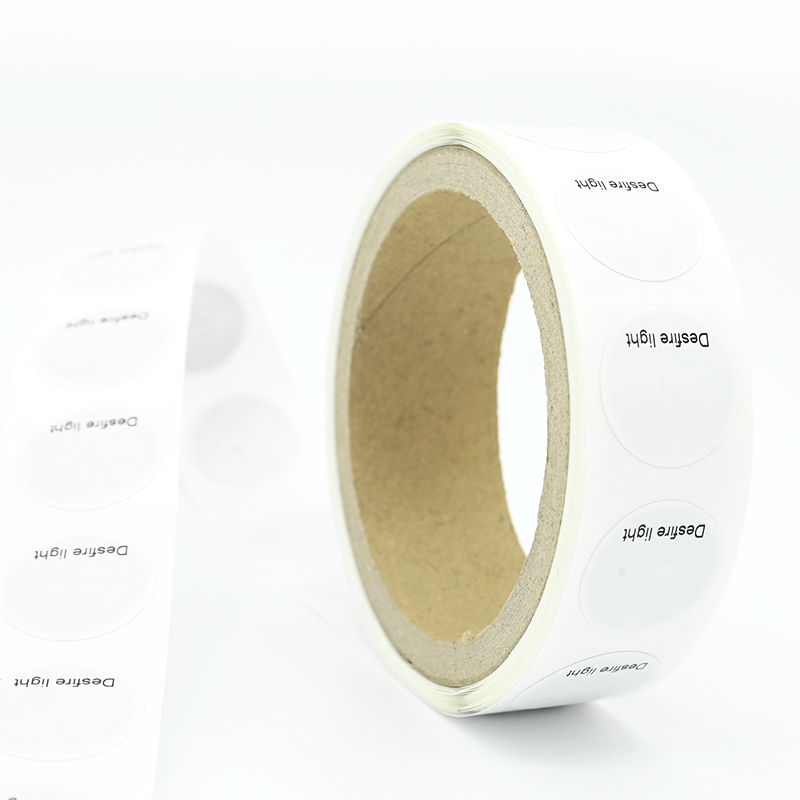
Er du klar til å modernisere varelageret ditt med RFID?
Oppgrader lagersystemet ditt med RFID-brikker som er skreddersydd for din virksomhet.
📩 Be om en gratis prøve eller et tilpasset tilbud
📱 Eller WhatsApp oss direkte: +86 138 2318 6864
OEM-merkevarebygging | Masseprising | Støtte for UHF, HF og NFC
Vanlige spørsmål - RFID-brikker i lagerstyring
Hvordan forbedrer RFID nøyaktigheten i lagerbeholdningen?
RFID-brikkene leses automatisk i bulk, noe som eliminerer manuell skanning og inntastingsfeil. Dette forbedrer nøyaktigheten til over 98% i de fleste miljøer.
Kan RFID erstatte strekkoder fullstendig?
RFID kan erstatte eller utfylle strekkoder. Det gir raskere behandling og krever ikke siktlinje. Men man bør ta hensyn til kostnader og systemkompatibilitet.
Er RFID egnet for små bedrifter?
Ja. RFID-løsninger blir stadig rimeligere og mer skalerbare, og mange leverandører tilbyr lav MOQ og pilotvennlige systemer.
Kommentarer
Varme produkter

RFID Laundry Tag Guide 2025: Smartere sporing, mindre avfall og reelle resultater
Visste du at smarte RFID-systemer kan redusere tapet av tøy med opptil 95%? Det er en stor forskjell for vaskerier som taper tid og penger på å spore tøy manuelt.
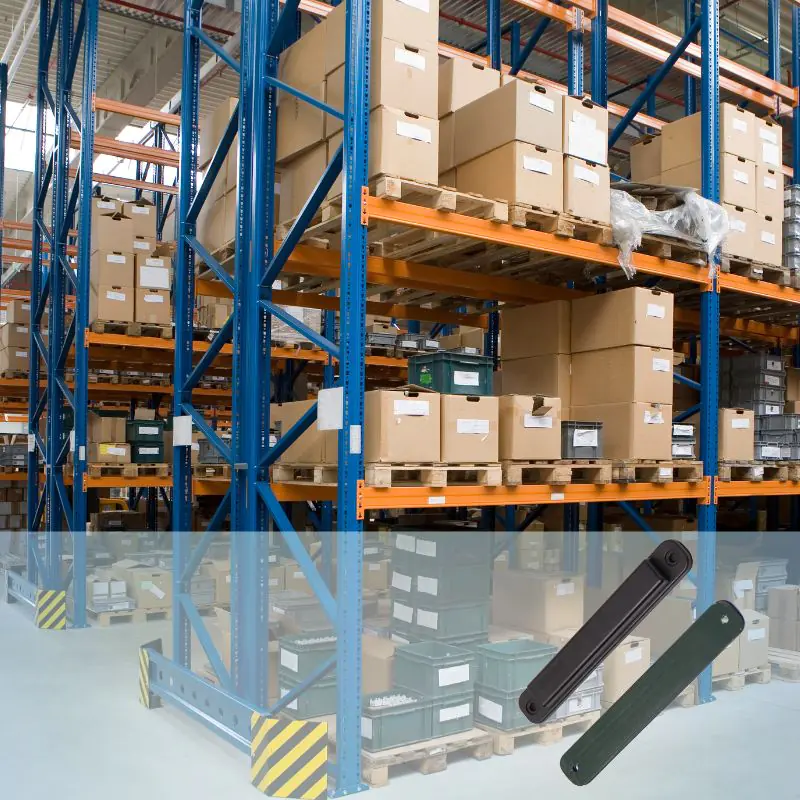
Hvordan RFID-tagger for paller effektiviserer sporing på lageret
Sporing på palle-nivå er avgjørende for nøyaktig lagerbeholdning, driftseffektivitet og sanntidssynlighet i dagens hektiske logistikk- og forsyningskjedemiljøer.
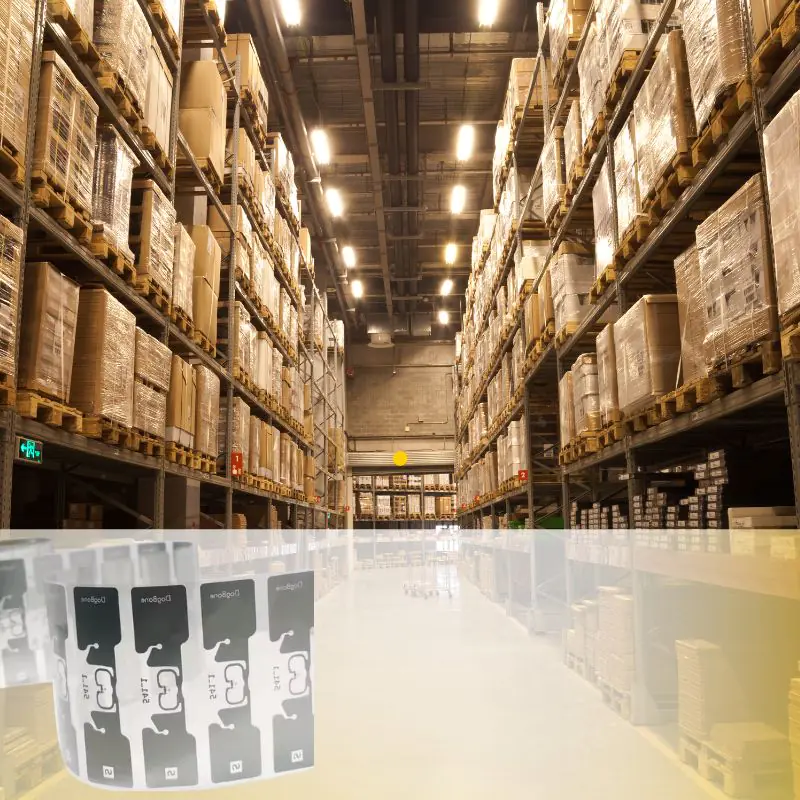
Topp 5 typer RFID-tagger for lagerautomatisering
Lagerdriften blir stadig mer kompleks, og manuelle sporingsmetoder holder ikke tritt med utviklingen. RFID-brikker for lagerautomatisering muliggjør datafangst i sanntid, raskere lagerbehandling og bedre sporbarhet.
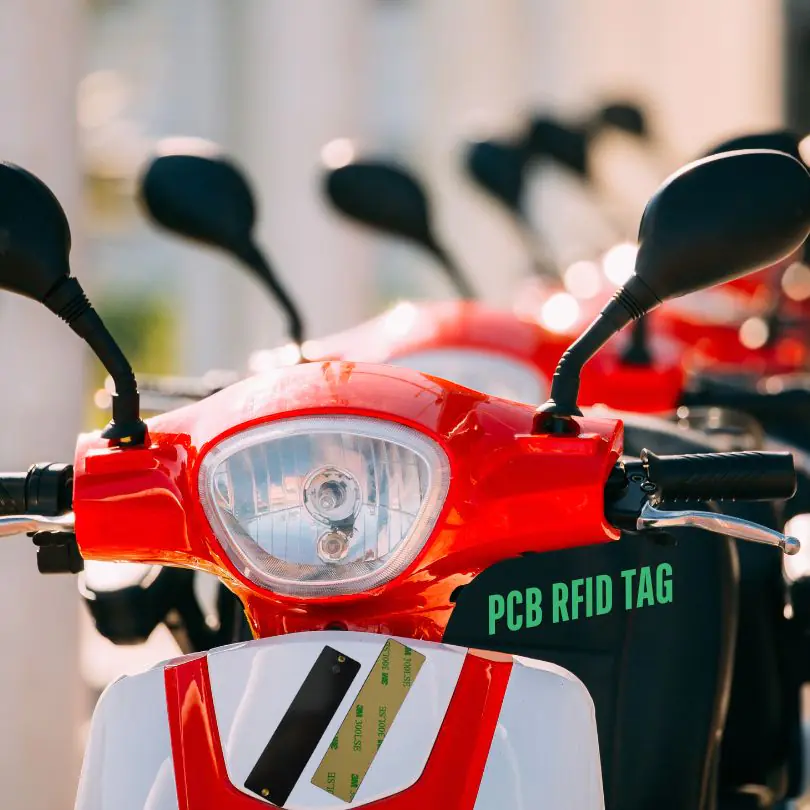
RFID-smarte nummerskilt hjelper Hengshui med å spore elsykler
Etter hvert som urbaniseringen akselererer og den grønne reisebevegelsen skyter fart, har elsykler blitt en viktig del av den daglige pendlingen i Hengshui i Henan-provinsen.
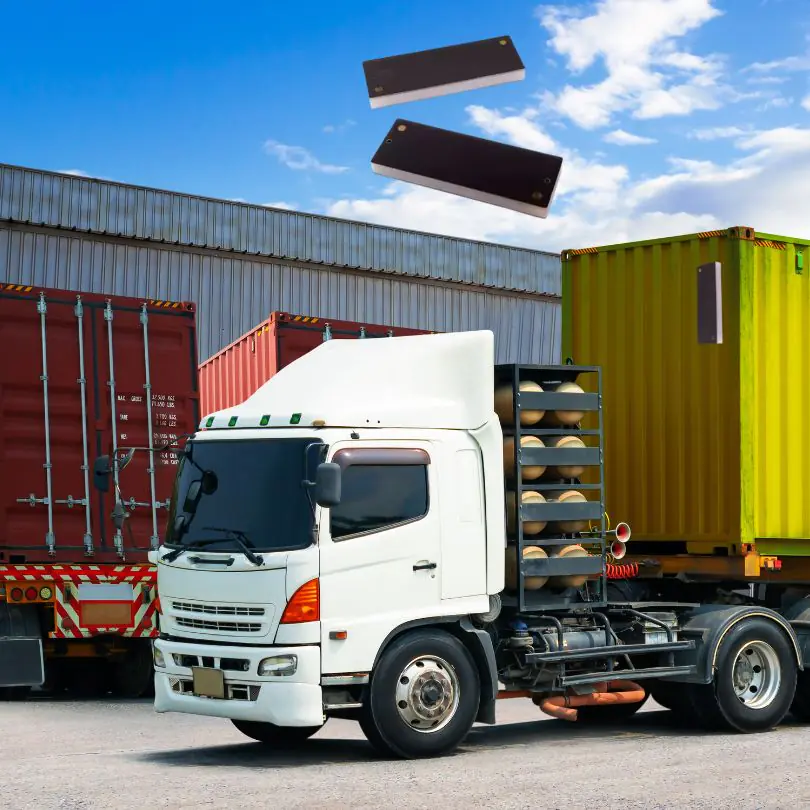
Hva er en PCB-tag
Lær hvordan innovative tag- og RFID-løsninger transformerer bransjer fra detaljhandel og logistikk til helsetjenester og utdanning.
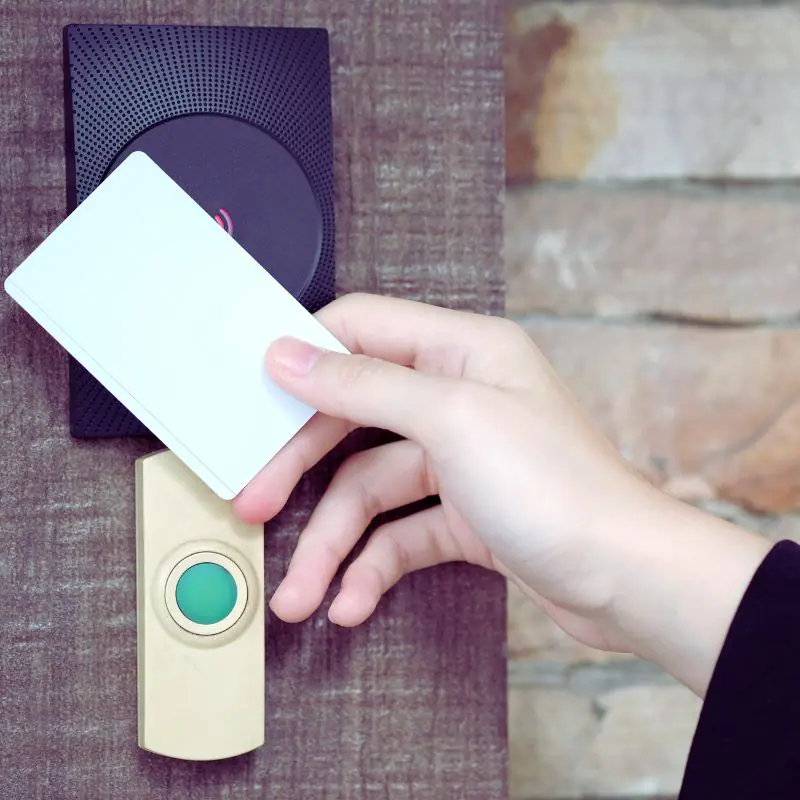
RFID vs NFC: De viktigste forskjellene mellom RFID og NFC
Denne artikkelen utforsker forskjellene mellom RFID og NFC, to teknologier som revolusjonerer forretningsdrift.
Tagger
RELATERTE BLOGGER

RFID Laundry Tag Guide 2025: Smartere sporing, mindre avfall og reelle resultater
Visste du at smarte RFID-systemer kan redusere tapet av tøy med opptil 95%? Det er en stor forskjell for vaskerier som taper tid og penger på å spore tøy manuelt.

Hvordan RFID-tagger for paller effektiviserer sporing på lageret
Sporing på palle-nivå er avgjørende for nøyaktig lagerbeholdning, driftseffektivitet og sanntidssynlighet i dagens hektiske logistikk- og forsyningskjedemiljøer.

Topp 5 typer RFID-tagger for lagerautomatisering
Lagerdriften blir stadig mer kompleks, og manuelle sporingsmetoder holder ikke tritt med utviklingen. RFID-brikker for lagerautomatisering muliggjør datafangst i sanntid, raskere lagerbehandling og bedre sporbarhet.

